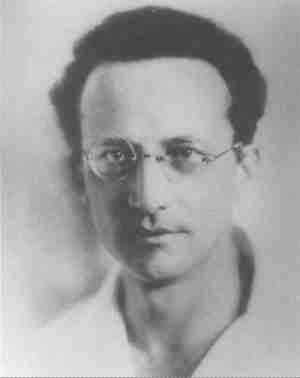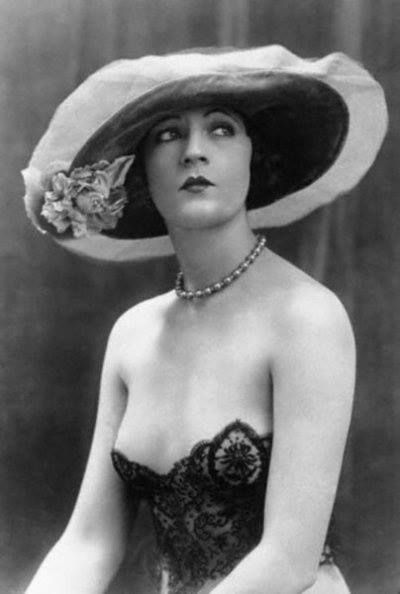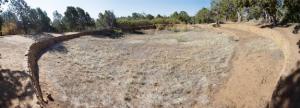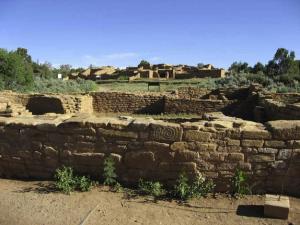In 1953, the police entered number 10 Rillington Place in London. It was
a house of horrors. The scene of 8 horrific murders. The man believed
to be responsible for these brutal killings was John Reginald Christie.
How was it that a decade of destruction went undetected and how was
Christie able to frame one of his neighbors, Timothy Evans, for a
murder he didn’t commit?
During the 1940s and 1950s Christie gained the trust of vulnerable women
and exploited that trust to sexually abuse, then kill them. He hid
their bodies in his house.
How did he get away with it and why wasn’t he brought to justice earlier?
Christie was born in Halifax in 1899. One of 7 children, he was the
youngest male in what was a largely female household and he resented the
fact that the girls had power over him. It made him crave the
opportunity for authority.
As a child, Christie joined the scouts and he sang in the choir. When he
joined the scouts, he had a uniform which he wore all the time, even
though he wasn’t supposed to. It gave him authority; it gave him a role
to play
Women played an important role in Christie’s life. One of his first
teenage sexual experiences is believed to have made a significant impact
on the way he viewed the opposite sex. The girl he went with was
slightly more experienced and he wasn’t able to have sex with her.
Of course, she told her friends, who told their friends and his name
became “can’t do it Christie” or “Reggie no dick.” Christie was
humiliated in his small community. These early problems with women were
to haunt him all his life and were to play a pivotal role in Christie
becoming a serial killer and nechrophiliac. He had impotence problems,
certainly when he was with a woman who had power over him; the power
that came from her sex, her gender. And that was a pattern for the way
that Christie was to behave later with the women that he killed.

On leaving school, Christie worked as a cinema operator and then he
found work with the Post Office as a postman. When he was 21 he met
Ethel Waddington. She was plain and homely. They married and the
marriage appeared to be happy for a while. They were seen as a
respectable married couple. But they had their problems. He was to admit
later that sex was always sporadic; there was no possibility of
children. During his job as a postman, Christie began to steal postal
orders. When he was found out, he went to prison for a while. His image
of respectability began to crumble.
On his release from prison he separated from Ethel and travelled to
London. He became addicted to the seedier sides of life. For a 10 year
period Christie existed in a twilight zone, where he lived within the
criminal world, visiting prostitutes, mixing with low life; having a job
here, losing a job there. He had no particular home; he drifted, going
into prison 3 or 4 times.
By the end of World War 2, Christie decided he wanted respectability. He
persuaded Ethel to return to him and they relocated to London’s Notting
Hill. They moved into a small flat at 10 Rillington Place. Here, nobody
knew of Christie’s criminal past and he set about to establish himself
as a respected member of the community.
He saw an advertisement in the newspaper for the British Reserve. He
applied, not mentioning his previous convictions. No one checked and
Christie, the criminal was suddenly in uniform; he was the symbol of all
that is good and he was on the right side of the law. And being a
Special Constable, gave him further opportunities to meet and engage
with people; specifically young women. He was so tenacious about his
role that the neighbours described him as; “the Himmler of Rillington
Place.” Christie’s position gave him power over the community and he
exploited it. If prostitutes gave him free entertainment, he turned a
blind eye to their soliciting.

Rillington Place was in a poor neighbourhood, but it was in a perfect
position for, the now respectable Christie, to continue with his seedier
pastime. Prostitution was a big problem. By the end of the war many
women had lost husbands and boyfriends, so there were a lot of women
with no men to support a family. And the only way they could earn a
living was prostitution.
With no contraception and no legal abortion many of the women found
themselves with unwanted pregnancies. Christie and Ethel capitalised on
this and performed illegal abortions in their kitchen. Ethel would
perform the abortion, while Christie would set up the anaesthetec. A
rubber tube from the gas stove put the women out with coal gas. The
scheme worked well. The Christies became well known in the area for
their procedures.
But life changed in 1943, when Ethel went to visit her sister in
Sheffield. With his wife away, Christie became involved with Ruth
Fuerst, a local prostitute. She was an Austrian émigré. She came to
England to train as a nurse, but by the time she met Christie she was
selling sexual services to U.S. air force men. Ruth became a regular
visitor at 10 Rillington Place.
A telegram arrived from Ethel informed Christie that she was returning
to London. Christie was in a difficult position. Would Ruth spread
rumours about him? Was she going to turn up and tell Ethel exactly what
had been going on? Christie had to dispose of Ruth.
During their final sexual encounter, Christie strangled Ruth. Years
later he would tell the police; “she was completely naked. I tried to
put her clothes back on her. I wrapped her leopard skin coat around her.
I took her from the bedroom and put her under the floorboards.”
In killing Ruth, Christie had found that he could attain the ultimate
form of power over women. This was the beginning of a sexual fetish that
informed an emerging pattern. His first kill had given him a thrill. He
was soon looking for another victim to satisfy his desires.

The year was 1944. Christie had given up his job as a Special Constable
and got a job at the Ultra Radio Works in Acton. It was there that he
met Muriel Eady. She was from a respectable family; a spinster in her
30’s. They met regularly in the canteen and Muriel told Christie that
she had a problem with catarrh. That set Christie’s mind rolling. His
wife was away again and Christie offered to cure Muriel of her
affliction using a breathing device. When she visited 10 Rillington
Place Christie put a mask on her face; it was connected to the gas
supply. It rendered Muriel unconscious. Christie liked women unconscious
because that way he could control them further, as opposed to a living
breathing woman who might have her own views about what might be
happening in terms of the relationship.

With his victim unconscious, Christie raped her and then strangled her.
Christie is quoted as saying; “I had this wonderful sense of excitement.
A wonderful sense of release.” Christie had now taken the lives of 2
young women; he buried their bodies in the garden. Nobody knew that they
had been visiting Christie, which meant he was free to continue his
murderous spree. It wouldn’t take him long to strike again.
Christie hid behind his established air of respectability. He was now
working as a ledger clerk at the Post Office. He and Ethel returned to
their system of helping out young women with unwanted pregnancies.
In 1948 a married couple by the name of Evans moved into the flat above
the Christies. Timothy and Beryl Evans were expecting their first baby
and they quickly attracted the attention of their sinister neighbour.
The Evans were from mid-Wales and they were in London for Timothy Evans
to seek work. With a very low IQ he could only find work as a van
driver. But it was his wife that interested Christie.
The Evans had their first baby, Geraldine. But family life wasn’t all
that they had hoped it would be. The cramped and squalid conditions at
10 Rillington Place were not the ideal conditions to raise a child. With
a second child on the way their problems were magnified. Timothy Evans’
wage of £7 a week was not enough. Unknown to Beryl, Christie knew of
their situation and he had a solution; an abortion. Beryl agreed, but
her husband was against it. Beryl tried to terminate her pregnancy
herself with medication and a douche. It didn’t work. While Evans was at
work, Beryl was in Christie’s hands.
When Timothy Evans returned from work, he returned to a tragedy.
Christie told him that he had tried to carry out an abortion on Beryl,
be she had died during the procedure. Christie told him that he, Timothy
Evans, was to blame for his wife’s death. With his low IQ, Evans was no
match for Christie’s manipulative sophistry. Christie told Evans that
both of them would go to jail; Christie for the botched abortion and
Timothy Evans for knowing about it. Timothy Evans would be found guilty
as an accessory. They decided that the whole mess should be covered up.
Beryl’s body was dumped in an empty room at 10 Rillington Place.
Christie told Evans that he would get rid of her in a drainage manhole
outside. Evans was now left with a small child and having to explain the
disappearance to Beryl’s family. And he was susceptible to another idea
from Christie. Christie suggested to Evans that he let a couple he knew
in Acton have Geraldine. There she would be safe and Evans would be
able to visit her.
No such couple existed.
Timothy Evans was a young, unworldly man. He was stressed and he
couldn’t have known how to react. He must have thought that Christie was
looking after his best interests, so he simply did as he was told. With
his wife dead, Evan’s decided to return to Wales. Both his relatives,
and Beryl’s asked questions about her death and the whereabouts of
Geraldine. On the 30th of November 1948 Evans was unable to maintain the
pretense any longer. Racked with guilt he went to the police station in
Merthyr Tydfil. He made 2 statements. In the first statement, he said
that Beryl had died in a botched abortion and he had put her body into a
manhole. The police in London searched the manhole but found nothing.
If they had searched the house and garden they would have found Beryl
and the bodies of the other 2 victims.
Evans then made a second statement implicating Christie. The police went
again to 10 Rillington Place and this time knocked on Christie’s door.
The Christies’ presented a united front and denied any wrong doing. The
word of a respectable married couple was worth more than the word of
working class Evans. Christie told the police that Evans was an abusive
alcoholic. When he told the police that he hadn’t seen Beryl for weeks
the police carried out a full scale search of the house. They found the
bodies of Beryl and little Geraldine behind a woodpile in the wash
house. Both had been beaten and strangled. Beryl’s corpse showed signs
of sexual interference.
But the suspicion of guilt didn’t fall on Christie. Evans was taken to
see the bodies and was of course shocked that Geraldine was dead. He’d
believed Christie’s lie about her being safe with a loving family in
Acton. At an interrogation at Notting Hill police station the easily led
Evans changed his story again. He confessed to murdering his wife and
child.
On the 11th of January 1950 Evans was on trial at London’s Old Bailey
charged with the murders of his wife and child. By this time he had
changed his statement again and he accused Christie of the murders.
Evans’ plea was not guilty, but the evidence against him was
overwhelming. Christie stood as a key witness against him. The trial
lasted 3 days and after just 40 minutes of deliberation the jury found
Evans guilty of the double murder and he was sentenced to death.
Christie’s evidence had been instrumental in convicting him.
The bodies of Ruth Fuerst and Muriel Eady lay undiscovered; Christie was
still free from suspicion. As the Christies left the court Evans’
mother shouted “murderer”. Ethel leapt to his defense. “Don’t you dare
call my husband a murderer! He’s a good man!”
Evans’ legal team appealed to the Home Secretary, James Chuter Ede. His
appeal was denied and Timothy Evans was hanged at Pentonville prison by
the famous hangman Albert Pierrepoint on the 9th of March 1950. Evans
protested his innocence to the end.
Relations between Christie and Ethel began to break down. She had caught
Christie fondling the genitalia of one of their victims. On the 14th of
December 1952 Christie strangled his wife in their bed with a stocking.
Unlike his other victims Christie did not have sex with her. He buried
Ethel under the floorboards.
A robbery occurred at 10 Rillington Place and the police were called.
They paid Christie a visit and were invited in to the killer’s home. One
police officer remarked later on the strange smell in the flat.
Christie explained Ethel’s disappearance by saying she’d gone to visit
her sick sister in Birmingham. With his wife gone, Christie was free to
indulge himself and he actively went looking for new victims.
Rita Nelson worked at a local tea shop and found herself with an
unwanted pregnancy. She turned to Christie for a solution. She had gone
to Christie for help, but she became the 6th victim at 10 Rillington
Place. Kathleen Maloney appealed to Christie’s skills as an abortionist.
Christie strangled her and buried her body beneath the floor boards –
alongside Ethel.
With Ethel alive Christie had to exercise some sort of control over his
behaviour. With Ethel dead the serial killer was out of control. The
bodies increased and the time gap between his victims narrowed. Christie
was operating in a world that made sense to him as a killer rather than
to approach his behaviour in a cognitive way. He was murdering
vulnerable women that he knew would not be missed.
Hectorina McGlellan was in need of somewhere to live. Christie heard
about her plight and offered her his flat. But Hectorina wasn’t alone.
Her boyfriend, Alex Baker moved in with her. After 3 days they decided
to leave. Christie asked her to pay a final visit before she moved on;
it would be her fatal mistake. He strangled her, before having sex with
her. Alex Baker came to Christie’s flat looking for her. Christie let
him search the whole house, but he couldn’t find her.
Christie was becoming nervous. The bodies of his victims were beginning
to stack up. He decided to move away from the scene of his crimes, but
he had no money. He decided to sub-let the flat to a couple from whom he
took about £7 – the equivalent of £181 in today’s money. This was
fraud. Christie did not own the house. But he took their money anyway
and moved away leaving behind him the house that had seen 8 murders and
still contained 6 of the bodies.
The landlord visited 10 Rillington Place that same evening and finding
people in his house that had no right to be there demanded that the
couple leave the next morning. The tenant of the top floor flat,
Beresford-Brown asked the landlord if he could use Christie’s kitchen.
On the 24th of March 1953 Beresford-Brown was fixing a bracket to the
wall at 10 Rillington Place. He noticed that there was wallpaper
covering an alcove. He removed it and discovered 3 bodies. The police
were called and a citywide search for Christie began. The manhunt was
one of the biggest ever seen.
The police left no stone unturned. All 6 bodies were discovered in the
house and the 2 bodies buried in the garden. 10 Rillington Place had
turned into a real house of horrors.
On the 31st of March a man was stopped by the police on the Thames
embankment near Putney Bridge. He told them his name was John
Waddington. On further examination they discovered that the man was John
Reginald Christie. He was taken to Putney police station. Christie
described his killings as acts of mercy, self-defense, or accidents of
suicide.
On the 22nd June 1953 it was standing room only at Court number 1 at the
Old Bailey. Journalists and the public crammed into the court, keen to
see the man whose crimes had shocked Britain. Christie was charged with
Ethel’s murder; the trial lasted 4 days. When asked if he’d committed
more murders, he said. “I can’t say exactly. I might have done. (He was
pleading insanity) He showed little emotion, only bursting into tears at
the mention of Ethel’s name. He refused to take responsibility for the
murder of Geraldine, the Evans’ baby; the crime that Timothy Evans had
been hanged for.
In his summing up, the Judge said; “That just because a man behaved like a monster, it did not mean he was insane.”
After just 1 hour and 20 minutes of deliberation, the jury returned a
verdict of guilty. Christie was sentenced to death for the murder of his
wife. Whilst awaiting his fate at Pentonville Prison Christie received a
letter from Timothy Evans’ mother. She wanted him to confess to the
murder of baby Geraldine, the crime for which her son had been hanged.
Christie not only refused, he retracted his confession of killing Beryl
Evans.
It seems that Christie was controlling women, in one way or another, right up to the bitter end.
On the 15th of July 1953 Christie was hanged at Pentonville Prison. He was 54 years old.
But even after his death his crimes and confessions left questions
unanswered. In 1966 Timothy Evans received a posthumous pardon but
attempts to formally quash his conviction have failed. A judicial review
in 2004 described Evans’ fate as an historic and unique injustice. He
had been in the wrong place at the wrong time and inadvertently moved
into a murderer’s lair.
A year later Rillington Place changed its name to Ruston Close; number
10 continued to be rented out to tenants. In the early 1970’s, after the
film 10 Rillington Place was filmed, the whole street was demolished.
It has been removed from the London map.







 Nobel-winning physicist Erwin Schrödinger had a complicated relationship
with mornings. At times, his sorrow over WWI kept him from getting out
of bed; other times he was too hungover. He even reorganized the Planck
lectures so that he could deliver them later in the day. But by the
1920s, he was also fond of going to the beach in Zurich in the mornings
with a blackboard, and he'd sit in the grass in his bathing trunks and
work out equations.
Nobel-winning physicist Erwin Schrödinger had a complicated relationship
with mornings. At times, his sorrow over WWI kept him from getting out
of bed; other times he was too hungover. He even reorganized the Planck
lectures so that he could deliver them later in the day. But by the
1920s, he was also fond of going to the beach in Zurich in the mornings
with a blackboard, and he'd sit in the grass in his bathing trunks and
work out equations.





















 Mothers
Day was invented by Anna Jarvis after her mother passed away in 1905.
Woodrow Wilson officially designated the holiday as the second Sunday in
May in 1914, so this year marks 100 years of Mothers Days. But to
Jarvis, it was Mother’s Day -with an apostrophe- meaning a day for each
person to honor their own mother; a private family occasion.
Mothers
Day was invented by Anna Jarvis after her mother passed away in 1905.
Woodrow Wilson officially designated the holiday as the second Sunday in
May in 1914, so this year marks 100 years of Mothers Days. But to
Jarvis, it was Mother’s Day -with an apostrophe- meaning a day for each
person to honor their own mother; a private family occasion.












